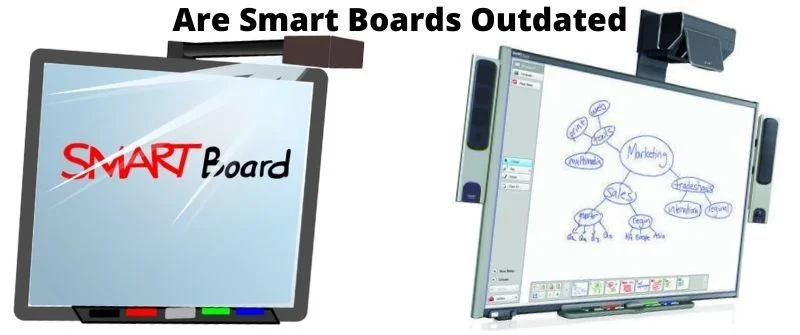Smartboards have been used in learning institutions for quite a while. They are touch-friendly whiteboards that make it easier for a teacher to write and move different effects around effortlessly. The boards are connected to a computer using HDMI cable.
This connection makes it possible to display the contents on the computer to the board. An instructor can move things by simply touching the board using a finger or using the special colored pens for writing on the board.
The board is advantageous to teachers because they no longer have to purchase markers for writing.
Moreover, there are also advanced whiteboards that can allow the participation of students on the board concurrently with the teacher.
Old version smart boards only allowed one participant to touch the board because they were not enabled to handle responses from multiple touches.
Are SmartBoards Outdated?
Smartboards are not outdated because they are still being used in teaching and making presentations. Even though they could be considered outdated, they are still a good option in most learning institutions.
Also, their replacement has been a big problem because of the cost involved, which makes smartboards worth it.
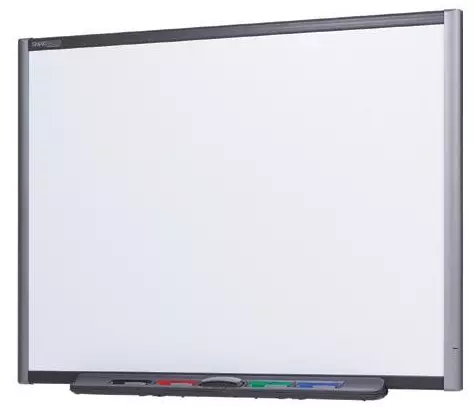
Smartboards are now more than 20 years old and when they stay for long, they become not only defective but also inconvenient.
A bigger number of teachers and instructors consider smartboards as outdated because of recent research studies indicating that they can emit radiation harmful to the DNA.
This can affect the immune systems of children because they are still growing.
When young learners are exposed to DNA-damaging radiations, they become vulnerable to possible changes in their blood or brain.
Are Smart Boards Worth It?
Smart boards are worth it because they aid in teaching and presentations. Even though smart board critics can argue that these boards are archaic, their significance in learning institutions is not debatable.
You can opt for the latest series of smart boards and enjoy a better classroom experience when interacting with students.
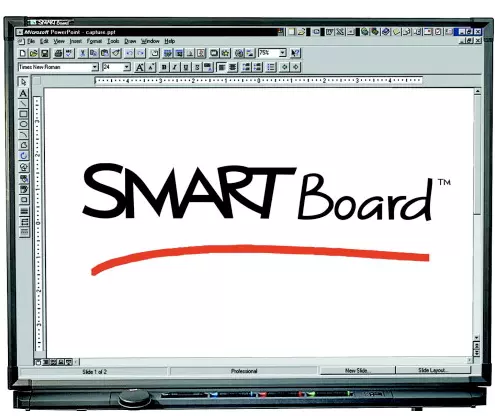
The latest boards can be connected to other devices and software to enhance interaction with students.
Indeed, smart boards are worth every penny because the expected lifespan is remarkable of you take care of them.
The use of these boards can improve learning by making it more meaningful and engaging.
It promotes student participation in classwork and this improves their thinking skills.
Below are reasons why these boards are worth it:
- Students get a good opportunity to be engaged in lessons actively. The act of taking notes and fully participating in class can help weak students to improve. This is one of the reasons the use of classroom smart boards outshines online classes or traditional blackboards.
- There is sheer cooperation and class teamwork between the students and the teachers. Teamwork is a positive aspect when physical learning is practiced. It helps student participation and the teacher has an easy time in identifying the weakness of each student.
- Smart boards should be installed in classrooms to make learning fun and interesting. All students are able to take part in group activities and enhance their problem-solving skills. It is simply a technology that facilitates the teacher engaging students conveniently.
- Smart boards can be operated with a teacher’s finger or a mouse. The boards can save data or pull up information hence they are considered convenient for today’s teachers.
- Smart boards are designed to open Microsoft applications such as PowerPoint and Word. This means a teacher does not have to write important points on a regular board.
- Showing clips on presentation is a smooth process when smart boards are involved. Whenever you want to show a particular clip, simply download or search on YouTube to pull one up. The use of these boards simply makes a teacher’s work easier and a lot of syllabus targets can be achieved in a short time.
The History of Smart Boards
Smart boards were first discovered and invented by David Martin in partnership with his wife Nancy Knowlton. Smart board technologies were first introduced in 1991 and to date; they have become a game-changer in the education sector.
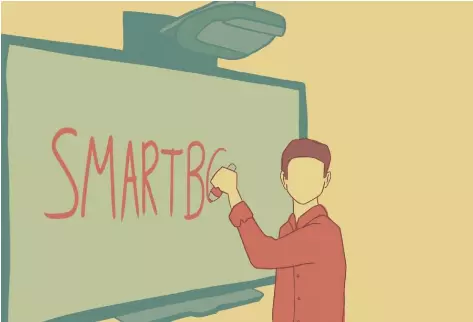
Classrooms, lecture halls, corporate halls and group meetings have embraced the use of these boards as the perfect way of facilitating presentations.
In late 1991, the first smart boards were seen in classrooms after most instructors and teachers decided to say goodbye to traditional learning boards.
The initial ones that were connected to LCD panels could only work as a display screen to run computer-incorporated databases.
The first smart boards that were invented during this period could only support a rear projection.
However, more improvements were discovered in 1997 and the manufacturers incorporated an in-wall rear projection technology that made it possible for users to perform smart displays.
From 2000 to 2001, smart boards became the most popular mode of presentation in schools. Smart recorder, meeting software, and smart software were combined to make the boards even better.
The manufacturers kept making positive improvements to these boards with the ones showing flat-panel displays being invented in 2003.
To date, users can enjoy the wireless slate version that allows them to make easy manipulation and selection of on-screen projects. Launching of various applications, creating and saving of notes was made easy.
There are now smart boards that teachers can use to track the performance of students and be able to organize all valuation results systematically in built-in books.
This has been facilitated by the inclusion of interactive response technology in these smart boards.
Pros and Cons of Classroom Smart Boards
With the implementation of smart boards in classrooms, there is no doubt that a good learning environment was achieved. Just like any other technological invention, smart boards have advantages and disadvantages to both the teacher and the leaners.
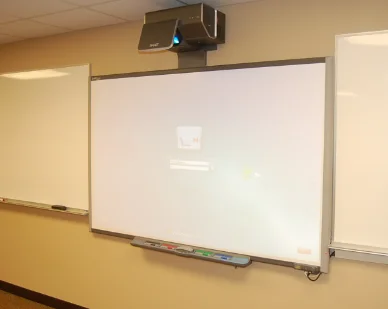
Advantages of Smartboards
- Classrooms that use smart boards have achieved a tailored learning atmosphere. This is an environment that enhances both physical and mental growth of the student.
- Latest smart boards come with virtual teaching enhancement tools that promote an interactive and engaging learning system.
- There is a fun and interesting learning atmosphere for students. Smart boards have created an environment that eliminates boredom in classroom.
- Teachers are able to administer learning in real-time through audio and video lessons. Moreover, multimedia presentations on smart boards can promote teacher-learner interaction.
- Smart boards have minimized usage of paper
- Teachers can use real time blended learning techniques that make teaching easier.
- The use of these boards has created good internet based teaching for schools and other level of learning institutions.
- Today’s smart boards are easy to integrate with other learning applications that have been technology enhanced. As such, sharing of assignments, reading materials, study resources and course curriculum is now achievable.
- Smart boards that encompass ICT can effectively support any form of E-learning.
Disadvantages/Limitations
- Affordability of smart boards is one of the major disadvantages that school institutions have to deal with. Electronic smart boards cost a lot more when compared to traditional blackboards.
- Latest smart boards are complex and may be difficult to handle especially if teachers are new to the technology.
- They need high maintenance for them to last long.
- Smart boards are extremely delicate. Staff, teachers and students in a school may find it difficult to operate.
- They are vulnerable to breakage. If this happens, the cost of repairing these boards is very high.
- Operators can encounter software difficulties.
- They are not easy to move around once you have fixed them in a classroom.
Better Alternatives to smartboards
For some schools, there is an obvious reality that these smart boards will be too expensive to install them in the entire school classrooms. Reasonable alternatives are available such as standard and interactive projectors. Interactive projectors have software tools which allow teachers to easily make drawings and interpret various images.
In this way, instructors and students can interact with the images projected for a better learning. A one-to-one iPad, Smartphone technology or regular Televisions that use a wireless mouse can also be used as alternatives to smart boards.

Joseph is a freelance journalist and a part-time writer with a particular interest in the gig economy. He writes about schooling, college life, and changing trends in education. When not writing, Joseph is hiking or playing chess.
